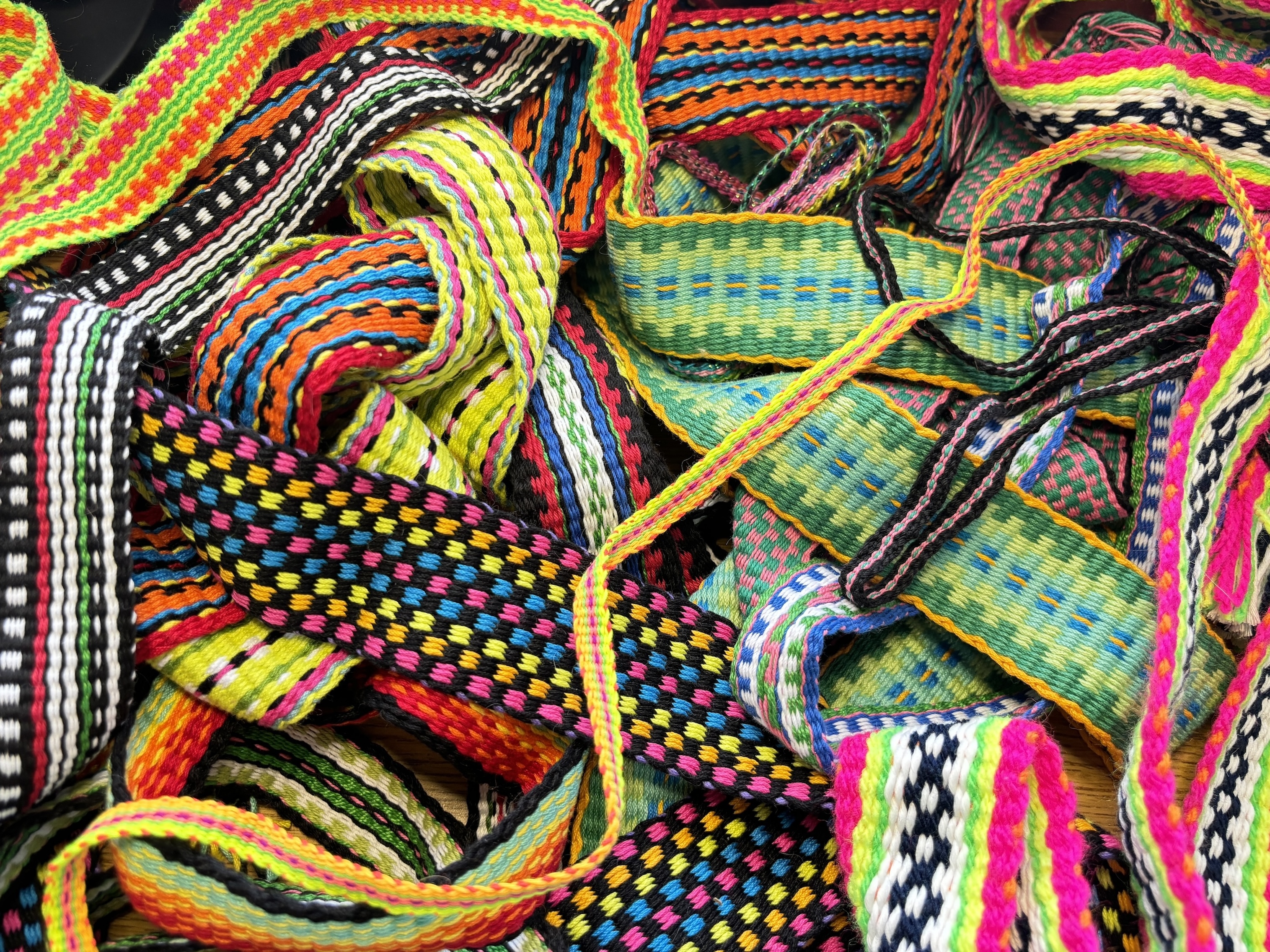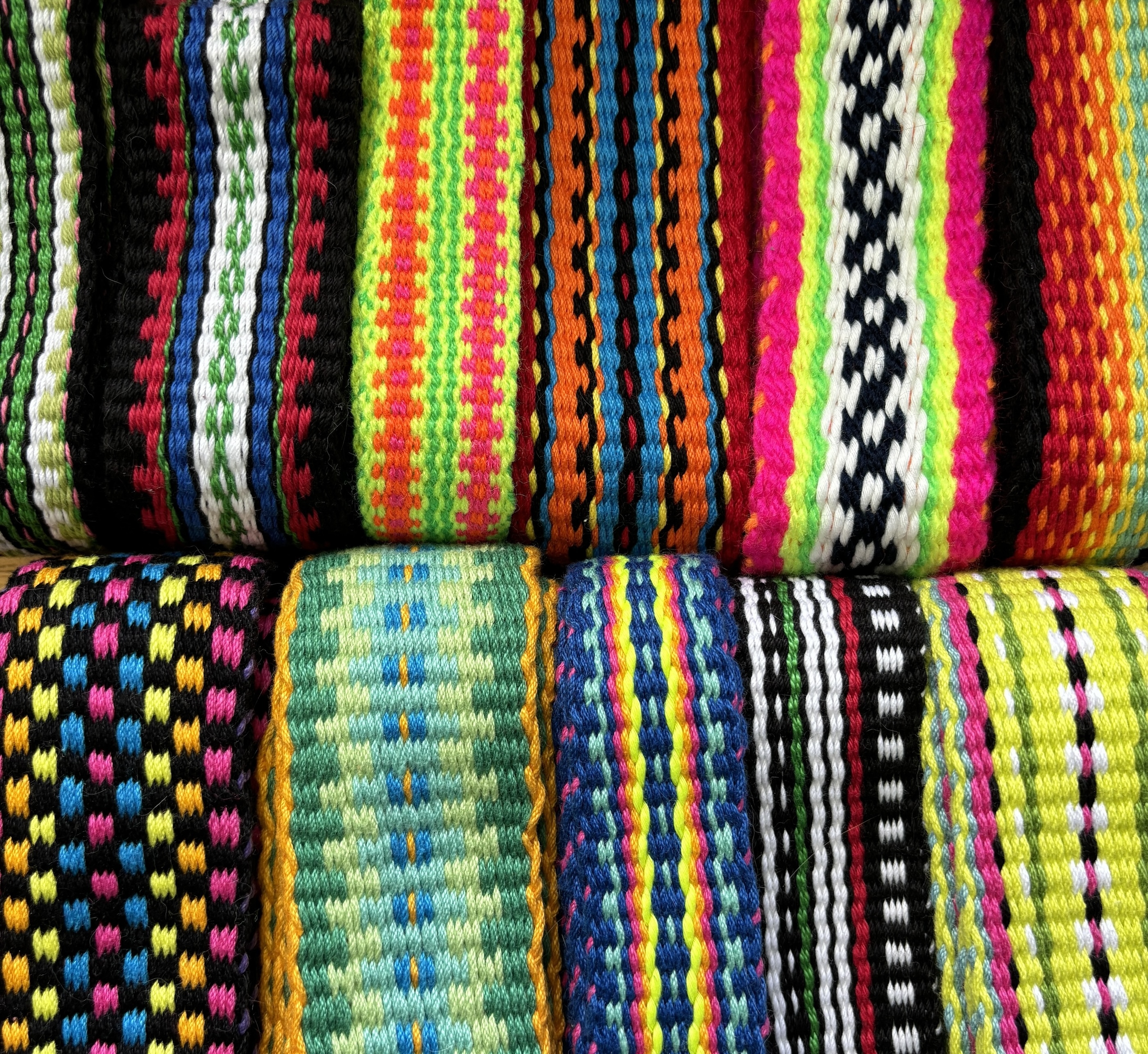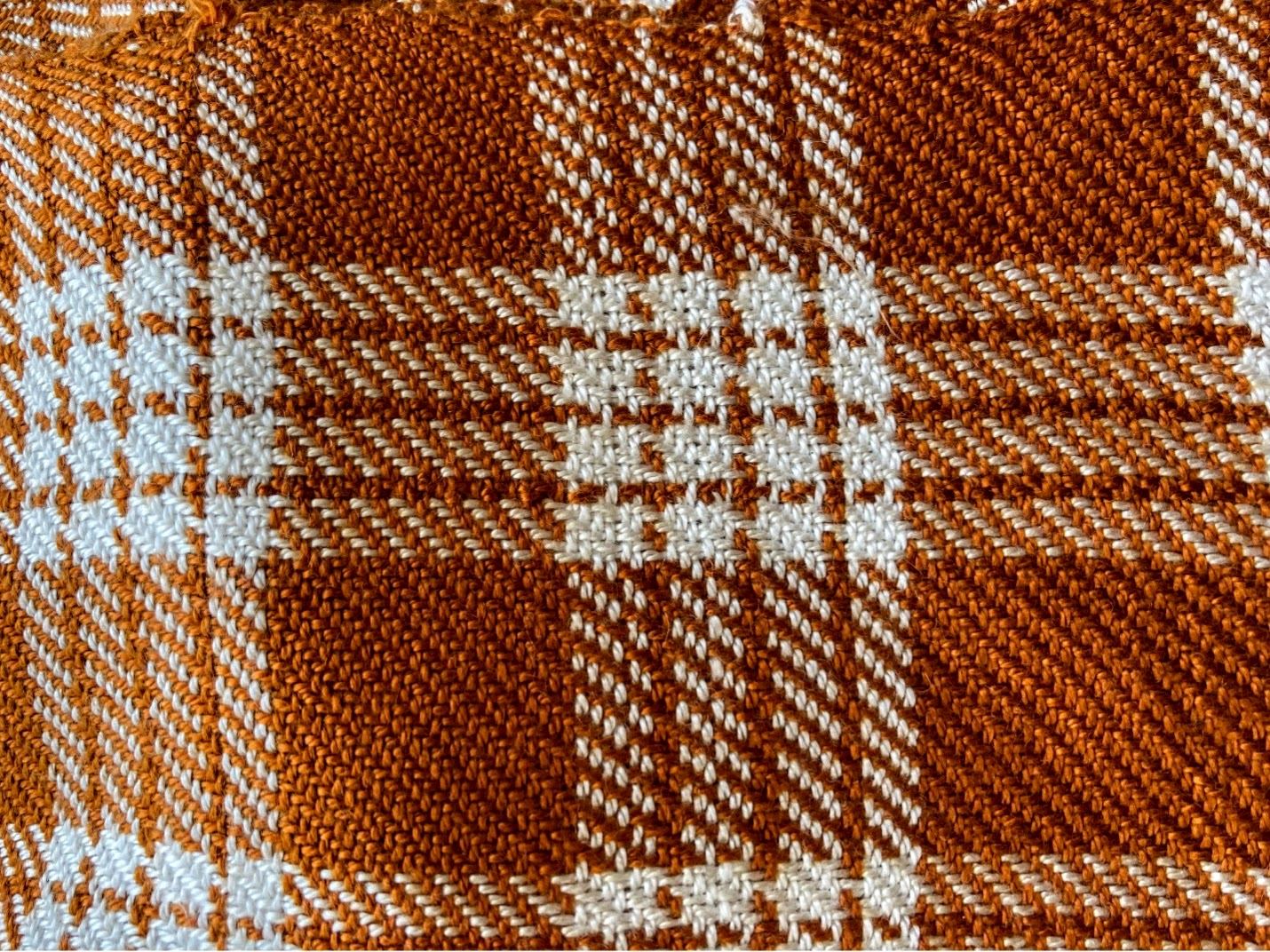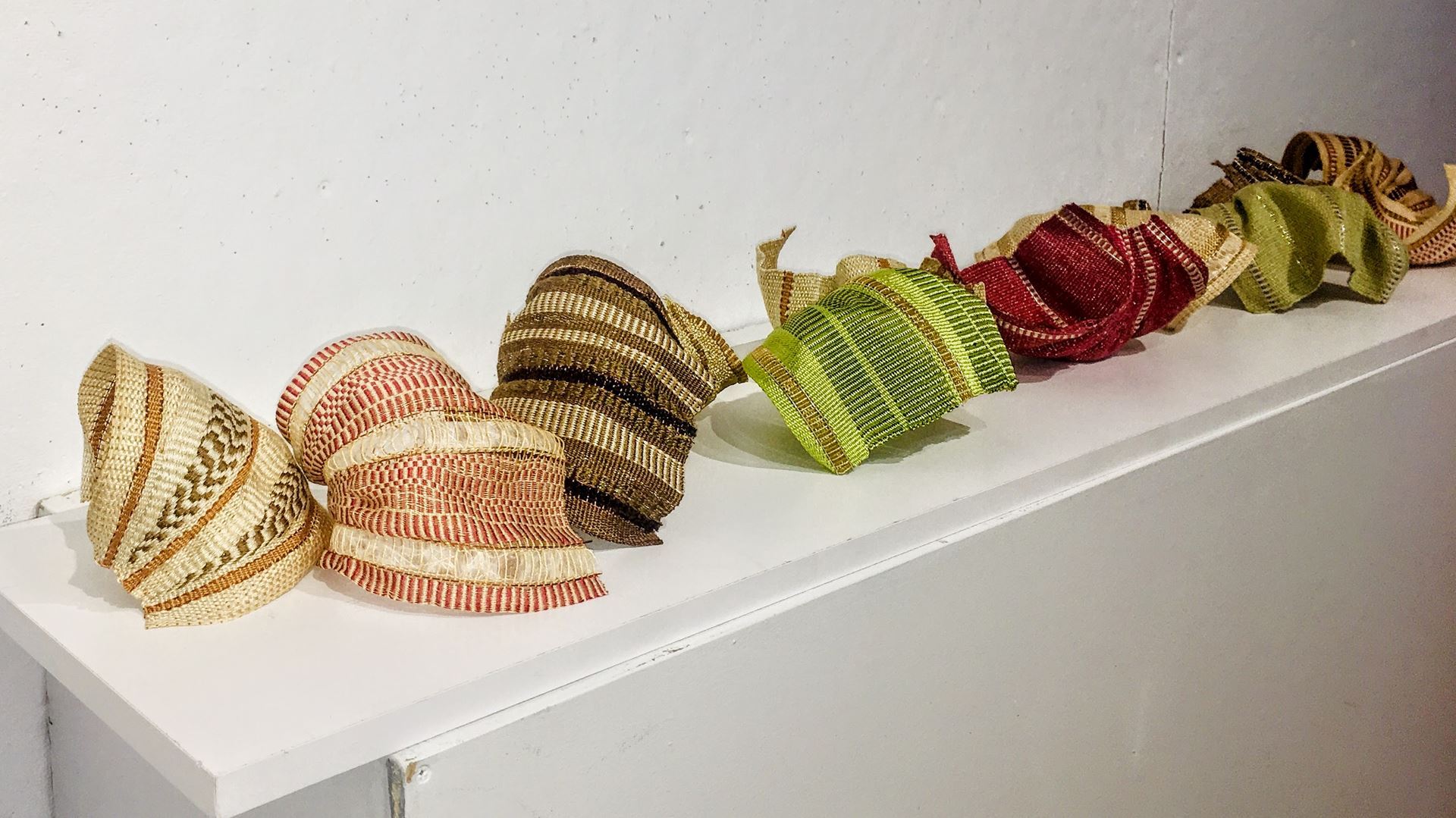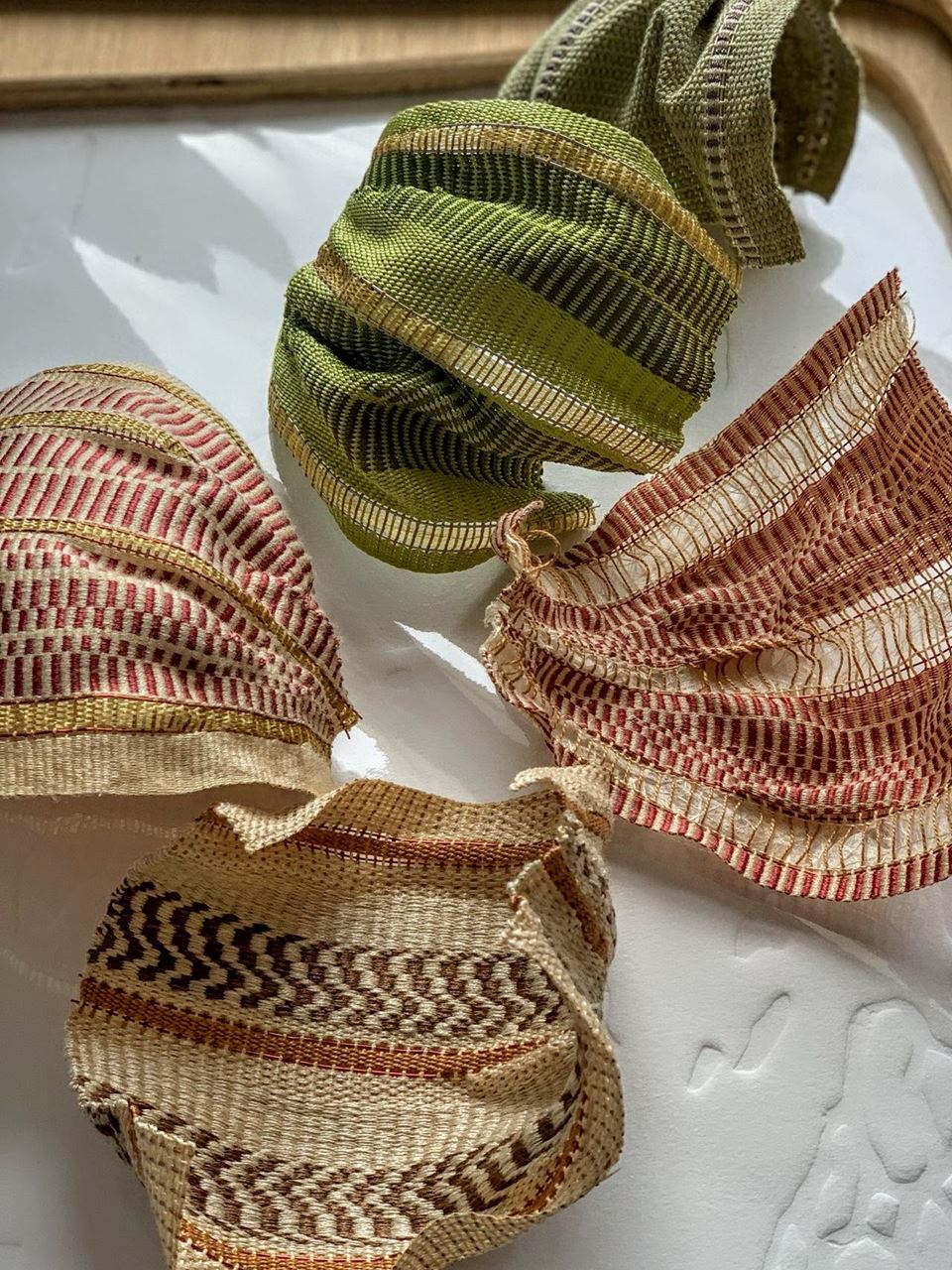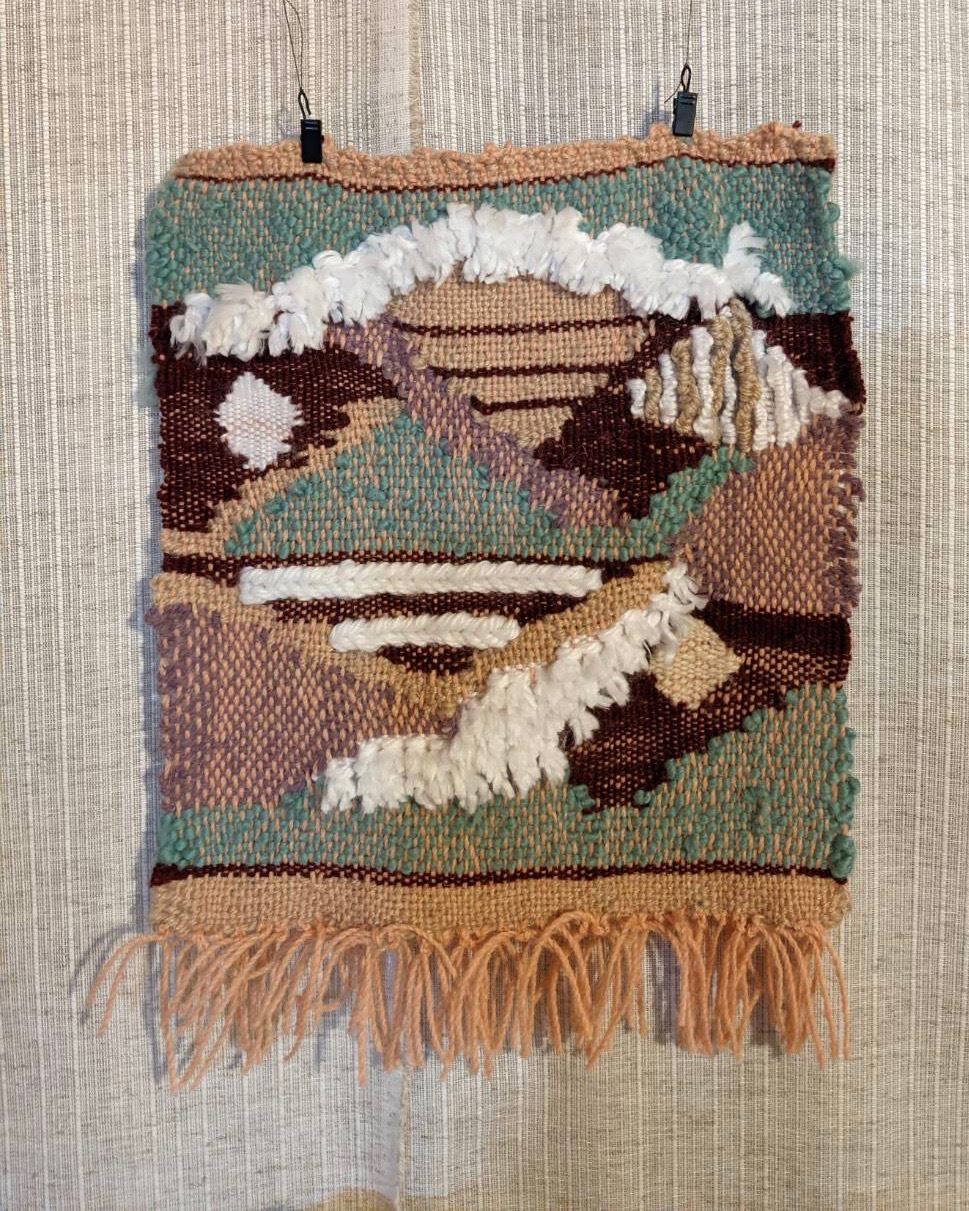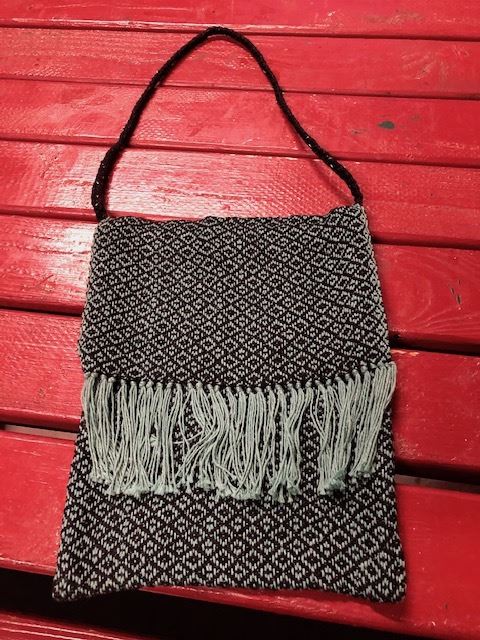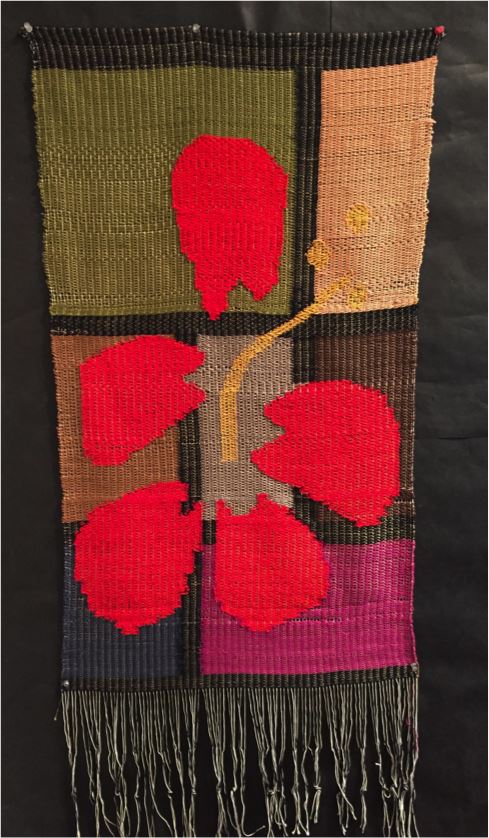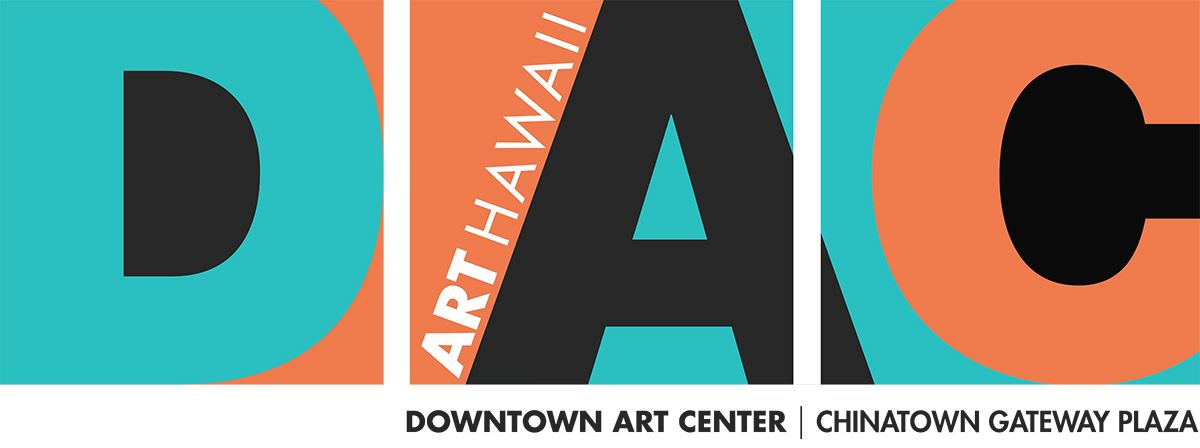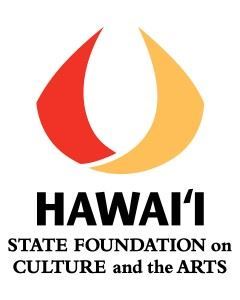Hawaiʻi Handweavers' Hui New Weaver Scholarship
Following our mission to encourage and promote excellence in handweaving, Hawaiʻi Handweavers' Hui sponsors an annual New Weaver Scholarship in the amount of $500 for someone who has learned to weave in the previous two years. We solicit applications from weavers throughout our state who can demonstrate their commitment to learning to weave, and who will continue their learning through classes offered in various workshops and schools, including (but not limited to) the University Laboratory School, and the hui's own studio at the Downtown Art Center in Honolulu.
Congratulations to Jordan Paguirigan our 2025 Scholarship Recipient! |
New Weaver Scholarship Recipients
2025 Jordan Paguirigan "My weaving is tied to my culture, my experiences, and the community of people that have shaped me into the artist that I am today. Growing up, I was always curious on the mechanics of machines and the way that things worked. Being raised by a grandma who was a seamstress and dress maker, and a mom who knit and crochet, caused me to see how our bodies relate to our surroundings and how we can use tools to transform materials into other objects. It was from this early observance where my love for fiber and the art of process grew. When I went to college, I knew that I wanted to explore tradition and indigenous practices more and found that humanity is centered on a connection to land. It is because of our ancestors’ connection to the earth that determined the thoughts of transforming our natural resources into utilitarian forms of art. Being Filipino, I always felt there was a strong connection to textile and in particular, weaving. After doing lots of research on my culture, I found that my people actually have a strong weaving history and tradition. For centuries, indigenous Filipinos wove baskets, floor mats, clothing, and many other fibers for everyday life. With this continued passion to connect deeper to my ancestors, I set off to learn how to use a loom and learn the process of transforming singular threads into a flat maleable piece of cloth. Learning about my culture led me to research traditional twills; specifically the binakol patterns of the Philippines and how a change of thread color, shape, or texture can impact our gaze and even hold spiritual power . My work lies within this space; a middle ground where there is an exchange of knowledge through observing. This is how I learn; by watching, observing, and then doing. This is how I learned how to weave. In college, I did not have a teacher that taught weaving and instead had to create my own lessons and research on how to do this art form. Learning on my own proved difficult but allowed me to dive deeper into the art practice and caused me to make lots of mistakes. Stumbling in this way was important because I was able to troubleshoot and understand the process of weaving in fine detail. I am forever thankful for Debra Chandler’s book, “Learning to Weave” and Youtube university, as well as some fiber artist mentors that I have met that helped me to succeed. Because learning on your own is difficult, I took a class at Downtown Art Center with Reina Young and Helen Rau and after this experience, I believe this was when my weaving took off. It was from this class where I learned to explore and play with threading and changing the heddles to achieve different patterns. I also learned the importance of community and how being surrounded by other weavers develops a strong bond of connective energy as you create art collectively. This is because when you are connected to others, you learn different perspectives, and new ways of doing things. For me, this is the basis of what weaving is. It is a metaphor for intertwining our individuality into a strong, tangible form. When we all come together through our differences, we can create a beautiful textile of life. This is what happened in that class. For that, I am forever grateful. | Since then, I have found so much joy in weaving. My plans as a weaver is to explore the relationships between traditional practices and contemporary art and how weaving can be used as a medium to reflect and share my stories and experiences. Receiving this scholarship allows me the resources to start my own weaving studio at home so that my practice can continue. This means investing in a loom of my own and other tools that help my weaving practice thrive. I know that I am a forever weaver and hope that one day, my passion and love for the art can inspire the future generations of weavers in Hawaiʻi and beyond." Jordan Paguirigan |
2024 Sara Ricer "I have tried various fiber arts and skills in the past such as crochet, knitting, and some sewing, but none of them really held my interest. Until recently, I figured weaving would also fall into this category of things I thought were interesting, but not interesting enough that I would want to spend a lot of my time with them. After finally taking my first weaving class in January of this year (Basic Weaving I with Joan Namkoong), I was completely hooked, and immediately started keeping my eyes and ears out for a floor loom to have at home, as I wanted to continue practicing some of the skills I learned in those three days. In February, I was back at the Handweaver’s Hui to take the Inkle Loom Band Weaving class with Barbara Long and I was instantly addicted to it. My own inkle loom arrived almost two weeks ago and I have been weaving on it almost daily. I really love weaving bands on this simple loom because it gives me a chance to play around with lots of different color palettes and repeating patterns. I’ve started to play around with some different things like pick-up and (turned) krokbragd designs, but there is just something really special about plainweave, and it feels like the possibilities are endless! I love being able to have an idea, draft a quick pattern, warp, and finish a piece, all in a relatively short amount of time. (Also, I am happy to report that I am also now cleaning and fixing up a well-loved floor loom at home, which I found with the help of an awesome member of HHH.)" Sara Ricer |
|
2023 Summer Escajeda "I have dabbled in the fiber arts since I was a child, knitting, crocheting, basket weaving, and macrame. In recent years, I also refurbished teak folding chairs, adding macrame backs and sold one at a pop-up event in spring 2020. I also worked at a Sailmakers, repairing and sewing/creating sails and other heavy boat covers etc using industrial sewing machines. I never thought I would be able to weave on a floor loom because of the expense and logistics (and I had never seen one in person), but after a visit to a friend on Big Island (Oct 2020) that had refurbished an old spinning wheel, I thought there must be a loom out there for me. That day, I looked on craigslist and I knew it was kismet because I found one that hadn’t been used in years in my price range. I really didn't know what I was doing but I was determined to grow this part of myself. The X-Frame Gilmore 46” Loom (Model year unknown but most likely 1936-1956) was missing parts, so I researched and found the manufacturer and we figured out what I needed to get it operational. I was able to replace the straps and install new heddles etc. I bought the book 'learning to weave' by Deborah Chandler and watched youtube videos, and I successfully warped it (Back to Front) and made a practice sample by March 2021. I didn't know there was a weaving guild in Hawaii before I bought my loom and in doing research on how to get it up and running, I found the HHH. Because it was still covid, I wasn't able to take an in-person class for almost a year (until Jan 2022) - which was a 2 hour class 'Taste of Weaving' from Mari Macmillan. I felt like I had already advanced past that so I wanted to take a longer class. Then I took the only available class that worked with my schedule (I work full time, 8-5 M-F) which was the wearable scarf class by Patricia Steinhoff (Jan – Apr 2022). I challenged myself to learn the palaka weaving pattern and wove 2 scarves. I learned a lot in that class and it made me feel more confident in my weaving abilities. When you’re a new weaver, there are so many things that can go wrong that you just don’t know about and having knowledgeable teachers/mentors has made a world of difference in my weaving and troubleshooting skills. It just so happened that in a couple months later (June 2022) there was a juried show [Fiber Hawaii - 40th anniversary] and one of my scarves was selected to be a part of the show. | 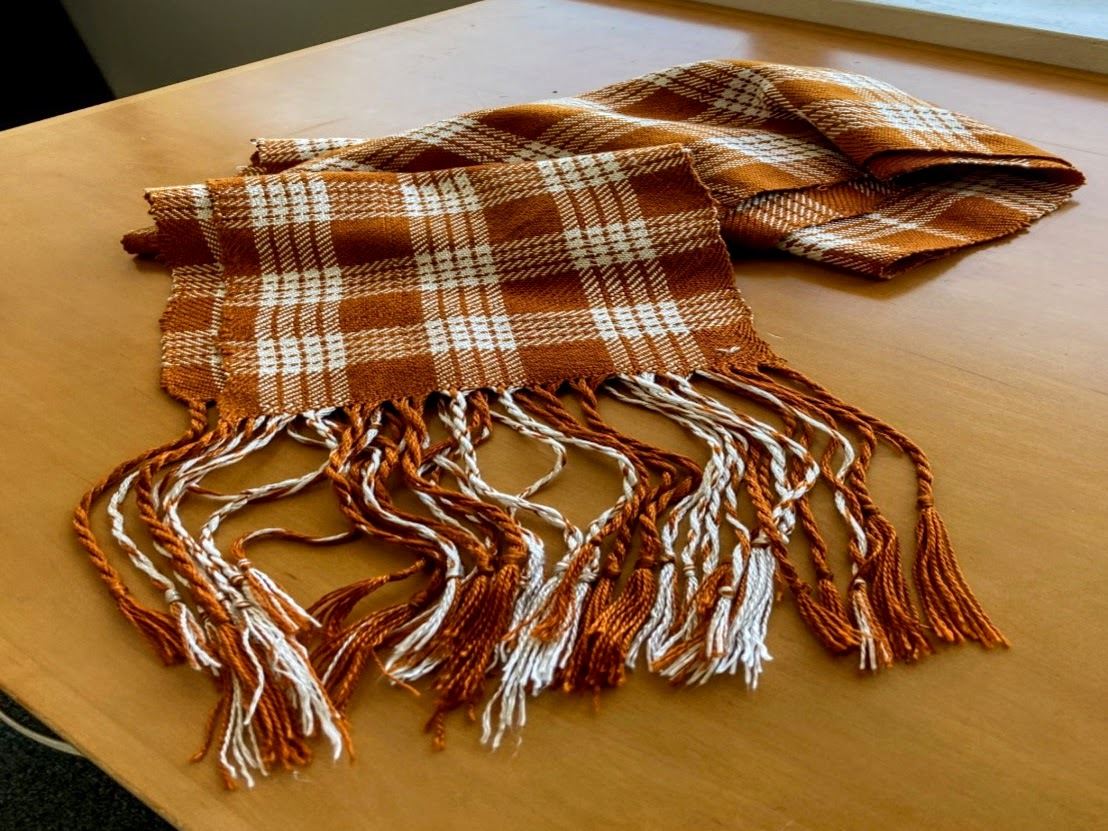
I am working on a towel set now, I'm scheduled to take an ikat workshop at the end of April, and another 10-week class, this time on Hucklace. In addition to those weaving classes, I’ve also taken a couple of eco-dying classes and attended a lecture on weaving with silk by Joan Namkoong. This is just the beginning of the weaving chapter of my life and I am grateful for the scholarship opportunity." Summer Escajeda
|
2022 Lauren Hirai "I grew up in Honolulu, and in my art, I have been inspired by patterns and processes in nature. I first learned to weave in a course at the Rhode Island School of Design Summer Programs in summer 2019. I began a course in lace weaving in spring 2020, but it was canceled midway through due to the pandemic. I am looking forward to learning more weaving techniques as well as natural dyeing back home in Honolulu. My piece was inspired by the patterns and structures of kahelelani Ni’ihau shell lei. I constructed the woven shells by incorporating a combination of metal wire and various yarns, exploring how woven pieces can embody the curled form of shells. I created darts by leaving triangular sections unwoven and pulling on the warp after removing each piece from the loom. The color palette is based on the warm tones of the kahelelani Ni’ihau shells and my memories of home. I primarily studied science in school, and I continue to be interested in what we can learn from the natural world. In future weaving projects, I am looking to experiment with different materials and draw inspiration from the local ecosystem to explore and reconsider human relationships with nature." Lauren Hirai |
|
2021 Lin Iinuma "Hi! My name is Lin Iinuma and I am a Junior from University Laboratory School. I first learned to weave in Ms.Franklin's weaving art class. Lin Iinuma |
|
2020 Joelle Dubois "Aloha! I learned to weave in April of 2019, taking classes in Washington with the Kitsap Weaving Guild, then attended the Double Weave workshop in Volcano this January. As a retired engineer, I’m drawn to how weaving is the perfect combination of mechanics, design and artistry. I currently weave on a LeClerc Dorothy (15”) and LeClerc Mira (36”), but hope to advance to an 8-shaft loom in the near future as I would like to experiment with historic drafts for coverlets." Joelle Dubois |
2019 Rebecca Maria Goldschmidt "I am a second year graduate student in the MFA program at UH. In my current work, I explore the histories of weaving and contemporary weaving practices of the northern Philippines as a parallel to my studies of the Ilokano language. I spent time in the Ilocos in January, where I was documenting vocabulary, style, and basic techniques. While I haven't taken a formal weaving class, I am learning how to weave from books, YouTube videos, and technical assistance from Mary. By incorporating plant material from my immediate surroundings as well as printed photographs, I speak to the layered experiences of connection to land and ancestors that can be achieved through reclaiming the art and process of weaving." Rebecca Maria Goldschmidt | 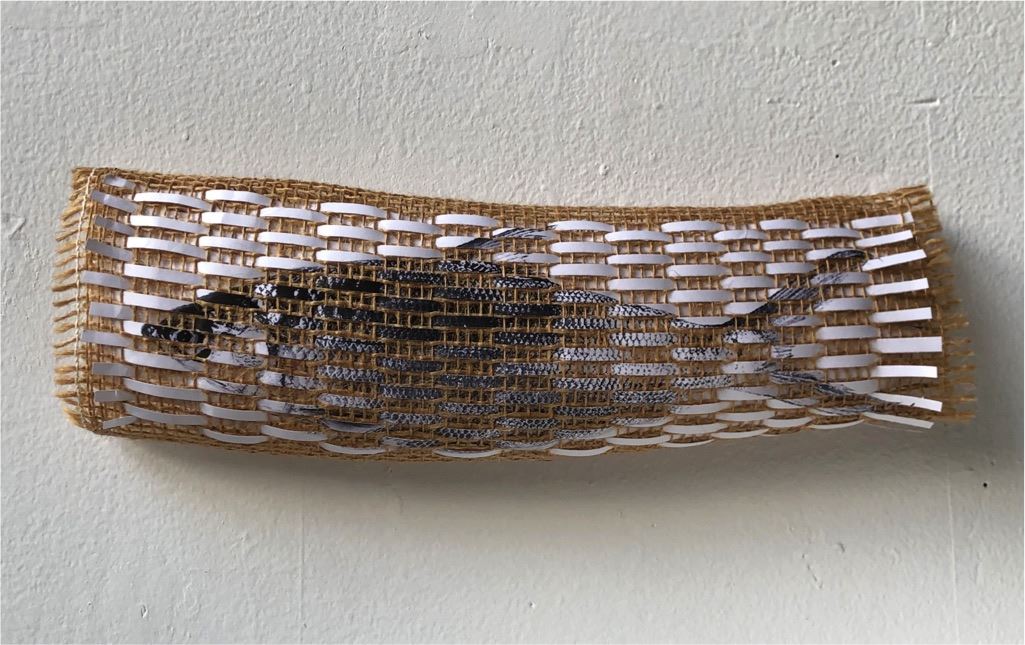 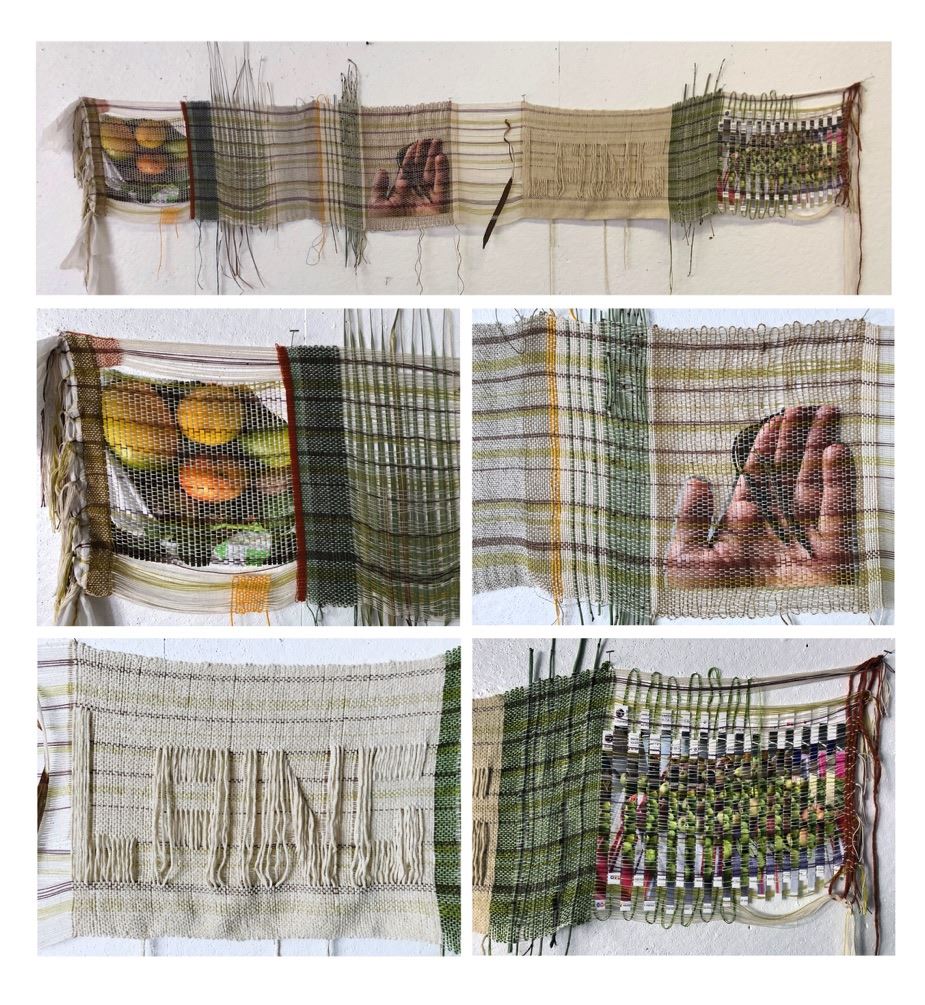 |
2018 Kerith Kanna Yawataya "My name is Kerith Kanna Yawataya and I am currently a senior at University Laboratory School. I enjoy weaving because the calming repetition of it allows me to relax. It also allows me to create art pieces that I can decorate on my walls. I learned to weave in Mrs. Franklins’s art class last year. The title of my piece is "Memories of Home". Whenever I look at it, I am reminded of my home in Hawaii and the memories I have here." Kerith Kanna Yawataya |



